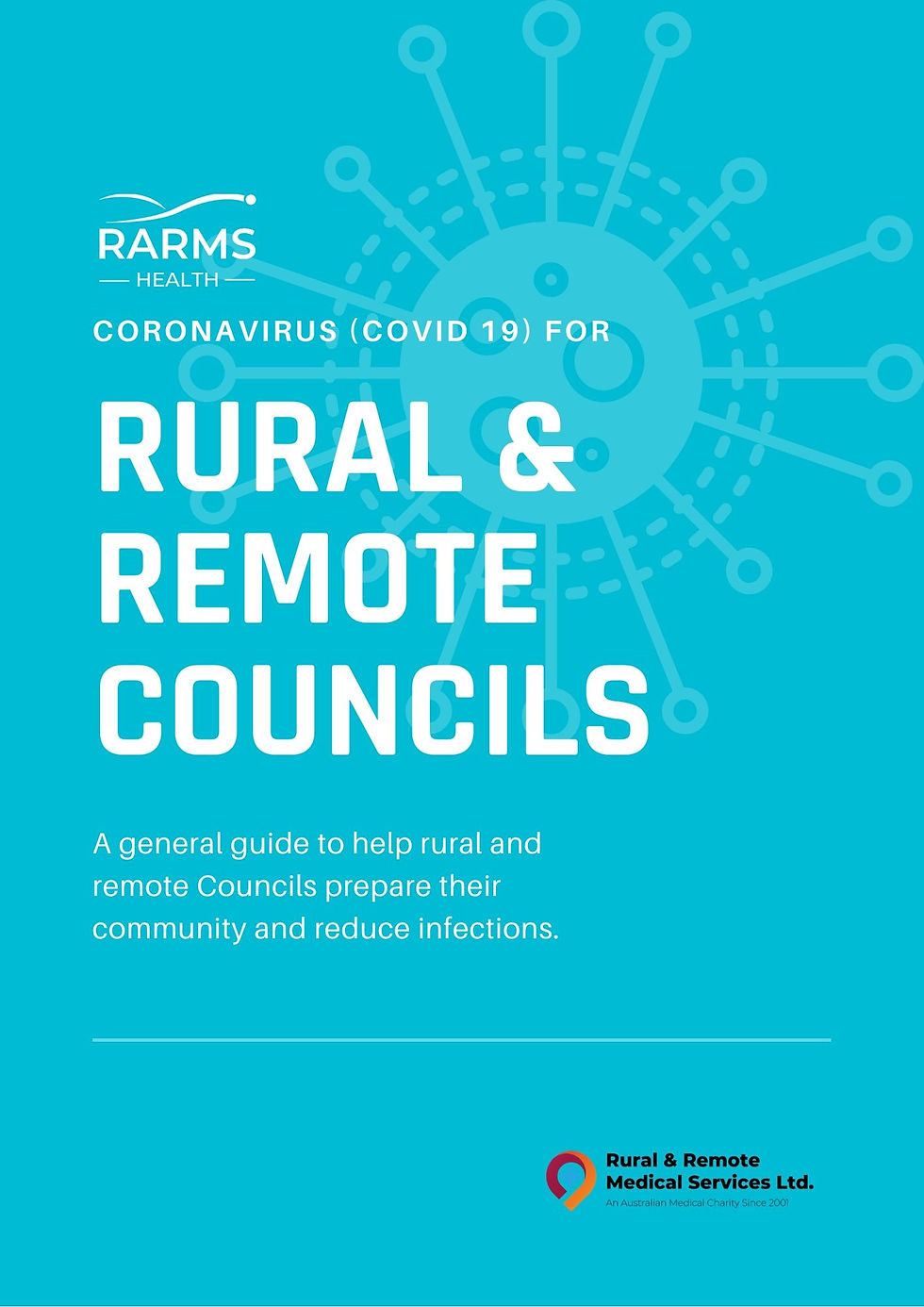RURAL AND REMOTE COVID-19 GUIDE LAUNCHED
- RARMS HEALTH
- Jun 30, 2020
- 3 min read
Updated: May 10, 2021
Mark Burdack, the Chief Executive Officer of the charity Rural and Remote Medical Services Ltd (RARMS), today launched a new web page for rural, remote and Indigenous communities to provide information on COVID-19.

The web page includes information on the possible risks for rural and remote communities, a Guide for Rural and Remote Councils on addressing the COVID-19 pandemic and some free posters that rural and remote communities can download to help inform their communities and reduce transmission.
“The risks and challenges for rural, remote and Indigenous communities are not the same as those in the cities and large regional centres” said Mr Burdack.
“People who live in rural and remote communities are at a high risk of serious illness and death if the novel coronavirus spreads to their communities.
“RARMS has more than 22,000 active patients across ten rural and remote locations. We are the largest non-government provider of on-the-ground GP services in rural and remote NSW. Around a quarter of our patients are from Aboriginal and Torres Strait Islander background.
“For almost twenty years, we have provided on-the-ground GP practices using doctors who live and work in some of the most vulnerable communities in NSW like Bourke, Brewarrina, Lightning Ridge and Walgett.
“The RARMS Remote GP Service can deliver 1,000 telehealth consultations every month in rural and remote areas.
“If we look at the data it shows that the people most at risk of adverse outcomes from COVID-19 are older and people who have pre-existing illnesses.
“Many people in rural and remote communities are older and have chronic diseases like diabetes, heart disease, respiratory disease and cancer. Aboriginal and Torres Strait Islander communities are at particular risk.
“If the coronavirus reaches rural and remote Australia, these communities will need to be ready because of the high proportion of ‘at risk’ residents and generally poor access to health services.
Mr Burdack explained that its not just the demographics of rural and remote towns that is a challenge. He said that RARMS is the main GP clinic for numerous satellite communities with maybe 200 or 300 residents. Many of these really small towns don’t have local shops, NBN, good mobile reception or appropriate transport services.
“Community protection strategies need to be adapted to reflect the unique circumstances of these communities. A one-size-fits-all approach doesn’t work.
“The web pages and Guide aim to equip local councils with some tools to make preparations that reflect the needs of their community” said Mr Burdack.
Mr Burdack applauded the Government’s announcement of a new Medicare item to allow patients to consult their regular doctor via telehealth. However, he noted that 25% of residents in western NSW don’t have a preferred GP (the second worst performing region in Australia) and 56.3% cannot access a preferred GP. Western NSW is the worst region for after-hours GP services.
"People with chronic disease are the one’s about which we are most concerned, including Aboriginal and/or Torres Strait Islander Australians, because they are the most at risk and the least able to access GP telehealth under current rules. We don’t want sick people coming into town unnecessarily so we can reduce the risk of transmission” Mr Burdack said.
RARMS is talking to the Government about how we might be able to expand its Remote GP Service to rural and remote people who may not qualify for telehealth under existing rules. It is also supporting initiatives to get Respiratory Clinics into rural and remote communities to improve testing and management of patients.
RARMS was established by a group of passionate and dedicated rural doctors as a charity in 2001 to establish and manage GP clinics in communities that could not attract or retain local doctors.
Media Inquiries: Mark Burdack Ph: 0418 974 988


Comments